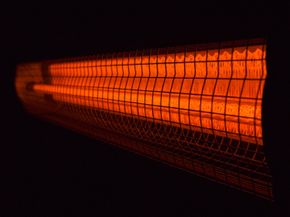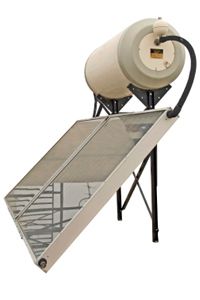You probably learned about infrared light when you studied wavelengths in science class. You also might have heard of infrared radiation or infrared technology, just from casual tidbits on TV commercials or in magazines. But to be honest, you've either forgotten or never really understood the science behind wavelengths and light spectrums. So you pretty much draw a blank when you try to figure out what infrared heaters do.
You might remember that infrared light isn't visible because it's beyond the spectrum we can see. That's the gist of an infrared heater: The heat is a product of light that is invisible to our eyes. The reason we get warm from an infrared heater is because our skin and clothes absorb the light [source: Wasch]. It's like the difference between being directly in the sunlight versus sitting in the shade. You feel warm in the sun because the light that hits your clothes and skin keeps you warm, but when you're in the shade, the light doesn't reach you as well.
Advertisement
There are several kinds of infrared heaters. Some might direct their infrared light straight into a room or space to create heat on the object it reaches. Other infrared heaters contain three parts that create heat: infrared light bulbs, a heat exchanger (such as a good metal conductor like copper) and a fan that blows air onto the exchanger to create the heat [source: Wasch].
Infrared heaters also differ in fuel source and construction material. There are propane, natural gas and electric heaters. Some are ceramic, and there are also portable ones [source: IQS Directory].
Infrared heaters have certain specifications and should be used only in certain situations. These heaters may be more environmentally friendly. Click to the next page to read more about some of the specifications of infrared heaters.
Advertisement



